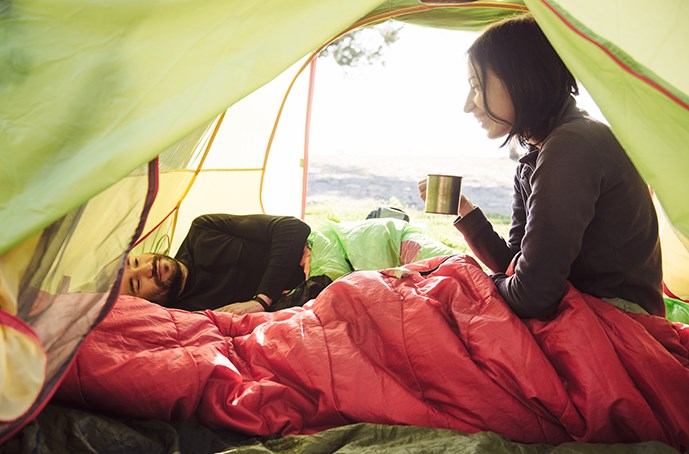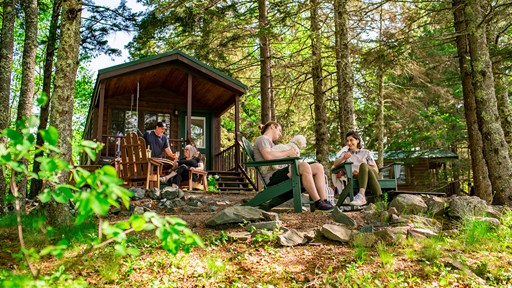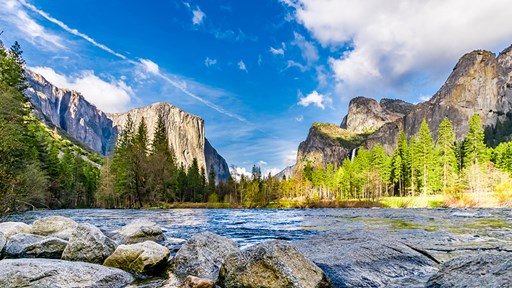A sleeping bag can make or break a camping trip. Think back to your first time camping overnight in a tent — was it hard to sleep? Did you feel uncomfortable at all, or did you get too hot or too cold as the night went on?
While every camper has to get used to the feeling of sleeping in the great outdoors, choosing the right sleeping bag for you and the season can make a world of difference in your experience. A good sleeping bag keeps you cool in the summer and warm in the winter — and, while those requirements seem simple enough, finding a bag that fits your camping needs can be trickier than it sounds.
A high-quality, season-appropriate sleeping bag is invaluable. This sleeping bag buying guide will help you choose the best bag for camping in any season — whether you are heading to the backcountry in late fall or spending a long summer weekend at a campground, you can find a bag that perfectly fits you and your situation.
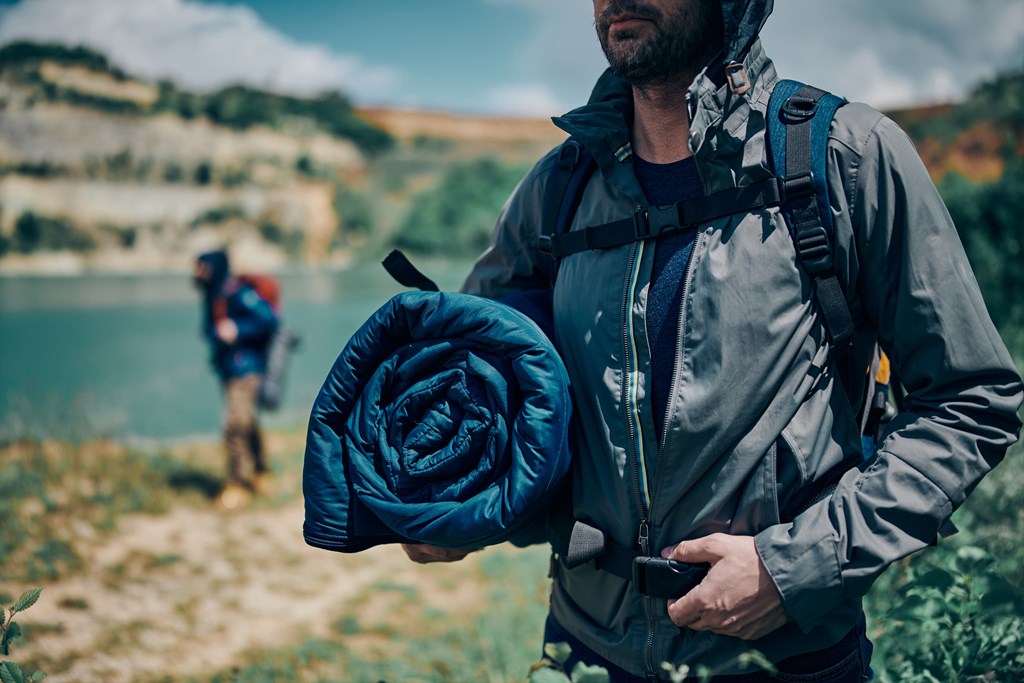
Different Types of Sleeping Bags
When most people think of a sleeping bag, they probably picture something long, rectangular and even bulky. However, sleeping bags come in many different shapes and styles, from bags designed to keep you warm on cool nights to ones intended for restless sleepers.
Each type of bag comes with unique benefits and disadvantages. Below are five of the most common types of sleeping bags: rectangular, semi-rectangular, mummy, double and kid-sized.
1. Rectangular
These traditional sleeping bags have plenty of room to stretch out and move around. They are a worthwhile choice for campers who prioritize comfort over warmth.
Because rectangular bags are larger than other types of bags, they do not retain as much heat. That makes them a common choice for warm-weather camping. As an added benefit, if you get too hot while sleeping or if the weather is unexpectedly muggy, you can unzip a rectangular sleeping bag and use it as a comforter instead.
While rectangular sleeping bags do not retain as much warmth as semi-rectangular or mummy-style bags, they provide plenty of space to move, which is helpful for restless sleepers or campers who might feel a little claustrophobic in a more form-fitting bag.
The ALPS Outdoors Redwood is an excellent choice for campers who want a warm, comfortable, long-lasting rectangular sleeping bag.
2. Semi-Rectangular
Structurally, semi-rectangular sleeping bags are similar to mummy-shaped bags. However, unlike the mummy, semi-rectangular sleeping bags do not completely conform to the shape of your body.
Also called a barrel or modified mummy shape, semi-rectangular bags can come in a variety of shapes. Most models are generally more slender than rectangular bags, with a rounded top and a slight tapering at the bottom.
Semi-rectangular bags aim to find the perfect balance between warmth and roominess, so you do not have to completely sacrifice wiggle room for the sake of heat retention. That makes them well-suited for cool-weather camping when conditions are chilly but not frigid.
Semi-rectangular sleeping bags, like the Sea to Summit Ascent, give extra shoulder room and are an excellent option for side sleepers.
3. Mummy
As their name suggests, mummy sleeping bags are meant to fit snugly.
Hooded and shaped to follow the contours of a human body, mummy bags are all about warmth. Their design does not account for roominess — if you roll over, you are likely to roll with your bag instead of inside it. However, the fitted shape provides maximum heat retention, keeping you warm in bitterly cold conditions.
The science behind it is straightforward — to maximize heat, mummy bags minimize the amount of air space around your body in the bag. This low air space means your body will quickly heat the air inside the bag, and less air gets pushed out of the bag when you shift or move while you are asleep.
Mummy bags are also typically lighter than many other sleeping bag shapes, making them a popular choice for backpackers. The Kelty Cosmic Down 20 is one of the best sleeping bags of this shape. It is an inexpensive yet quality mummy sleeping bag option for your next backpacking trip.
4. Double
If you want to cuddle up with your significant other on a camping trip, you can buy a double sleeping bag. These bags typically come in a rectangular shape but double the width of a typical sleeping bag. The Nemo Jazz Double, for example, features a rectangular shape with zippers on both sides for entry. You can find double sleeping bags in other shapes like barrel and mummy as well.
With the right bags, you can make a DIY double sleeping bag. Some single-sized rectangular bags have special zippers that can attach to another bag — if you and your partner purchase the same brand and model, you may be able to create a makeshift double-sized sleeping bag.
5. Kid-Sized
These sleeping bags typically have all the features of an adult bag but are smaller and cheaper. You can find kid-sized sleeping bags in any shape, such as mummy, rectangular or semi-rectangular.
Many kid bags come in fun prints, patterns and colors, allowing your child to choose a bag that represents their tastes and interests. Coleman Kids sleeping bags offer a budget option rectangular bag with lots of fun colors and patterns to choose from.
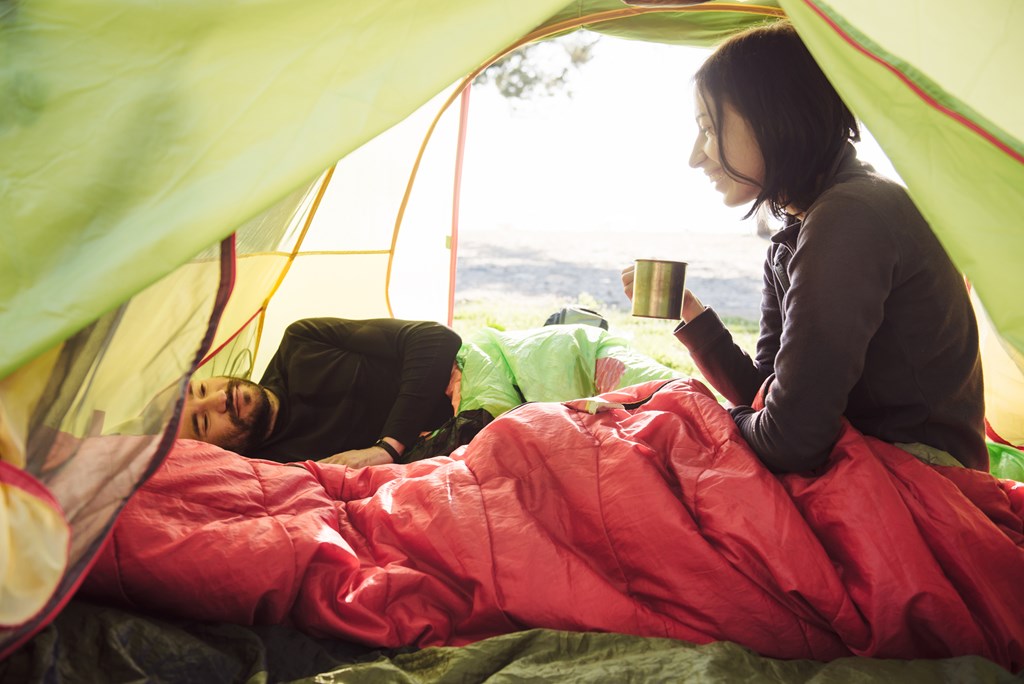
Guide to Choosing the Right Size Sleeping Bag
The next step in finding the perfect sleeping bag is size. While rectangular bags offer more universal sizes, fitted bags require more precise measurements to get the right fit. To maximize warmth, you want to pick a sleeping bag that is relatively tight, but you should also factor in room for your clothing or whether you want to use a blanket inside your sleeping bag.
For fitted sleeping bags, you need three key measurements: your height, shoulder girth and hip girth. The shoulder and hip measurements will help you find a sleeping bag that is the right width, while an accurate height measurement will determine the optimum length of your bag. Here’s how to choose a sleeping bag that fits you.
1. Sleeping Bag Length
To determine the right length of your sleeping bag, first, make sure you have an accurate measurement of your height. Ask someone to help you measure yourself in inches and in centimeters — if you are ordering a sleeping bag from a company that uses metric units, it is helpful to have the information on hand.
Avoid sleeping bags that match your measurements. For example, if you are six feet tall, a six-foot-long sleeping bag will fit too tightly — you might have no room to move. Instead, look for a bag that is a few inches longer than your height.
Here are a few tips for shopping based on gender:
- Men: These sleeping bags have regular or tall options. Tall sleeping bags fit those six feet to six feet six inches tall. Regular bags fit those who are five feet six inches to six feet tall. Some bags have short options that fit people up to six feet tall.
- Women: Women’s sleeping bags are shorter and have tall and regular options. Tall sleeping bags fit women up to five feet 10 inches. Regular sleeping bags suit women up to five feet four inches tall, and taller women can shop for unisex bags. Children’s sizes may also work well for petite women.
Shop for the shortest-length sleeping bag that fits you. This option will allow you to move around while trapping heat around your feet to keep them warm. The only reason you might want extra space is to stow clothes or footwear in your sleeping bag.
Alternately, a too-small bag will not help anyone, either. Zip yourself up in a bag, pull on the hood and check if your feet are pushing against the end of the bag. If they are, the bag is too short — your feet will compress the insulation at the foot of the bag, reducing its heat retention and overall efficiency.
2. Shoulder Girth
The next measurement you need is your shoulder girth. Pull a tape measure around the circumference of your shoulders — to make sure you are taking the broadest measurement, lower the tape measure about two inches from the tops of your shoulders. If all you have on hand is a yardstick or other inflexible measuring tool, you can do this with a piece of string and then measure the string’s length.
Sleeping bags tend to have different shoulder girth measurements for men and women. Here is a breakdown of what to expect from the two types.
- For men: Most sleeping bags have a shoulder girth that ranges between 60 and 64 inches, although some can stretch as wide as 66 inches or as narrow as 58 inches.
- For women: Typically, women’s sleeping bags have narrower shoulder girths than men’s. On standard women’s sleeping bags, the shoulder girths range from 56 to 60 inches, although some brands offer wider and smaller measurements.
Visit an outdoor outfitter and try out a few sleeping bags with different shoulder girths — you might find you prefer a looser fit as opposed to a snug one, or vice versa. Even a few inches can make a surprising amount of difference in the feel of a sleeping bag, so experiment with a few different sizes to figure out your preferences.
3. Hip Girth
After measuring your height and your shoulders, take a tape measure around the broadest part of your hips. This circumference is your hip girth, and it will help you pinpoint the right dimensions for your sleeping bag.
Like length and shoulder girth, the hip circumference of sleeping bags differs by gender.
- For men: Most men’s bags taper in from the shoulders. Typically, the hip girth for men’s sleeping bags is around 58 inches.
- For women: Women’s bags tend to have narrow shoulders and wider hips, up to 60 inches in circumference.
Like with length and shoulder girth, the best way to discover what hip dimensions best fit you is to try out a few different bag sizes.
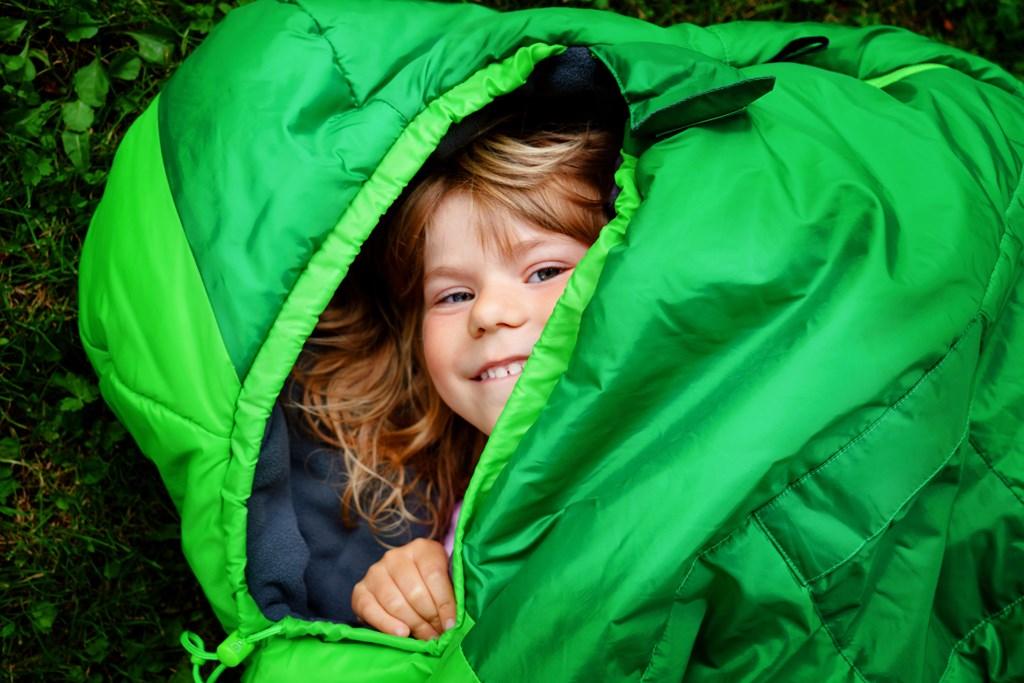
Understanding Sleeping Bag Temperature Ratings
Every sleeping bag comes with a specific temperature rating, letting you know the range of conditions where it performs the best. According to the EN/ISO standards, all sleeping bags now get independently tested and receive a comfort and temperature limit rating.
To test a sleeping bag, manufacturers place a heated mannequin filled with various sensors into a sleeping bag. Each mannequin wears a specific base layer of clothing, designed to imitate what a typical camper would wear. The testers arrange the bag and mannequin on a basic foam mat in a cold chamber, and they monitor the dummy’s signals as temperatures drop in the room.
Specifically, the team looks for benchmarks like the point when the mannequin’s body heat fills the sleeping bag and the range where its body temperature stays steady. They also monitor the temperature that makes the dummy’s heat begin to decrease, eventually determining the conditions where the bag is no longer practical.
Based on the test results, the sleeping bag gets labeled to indicate its comfort, transition and extreme temperature range.
- Comfort range: The comfort range indicates the temperatures at which a cold sleeper might feel comfortable in the bag.
- Transition range: The transition range indicates the temperatures at which a warm sleeper might still feel warm. While someone might not feel completely comfortable in this range, they are not shivering.
- Extreme range: At the extreme range, a sleeper will experience intense sensations of cold. If you use a sleeping bag in this range, you are putting yourself at risk for problems like hypothermia — you should only use extreme cold-weather sleeping bags in frigid temperatures or cold-weather emergencies.
Keep in mind that while some people sleep cold, others tend to sleep hot — your personal comfort levels are unique to you. Experiment with a few different temperature ratings to find the range that suits you and your location. Numerous other factors also affect how warm you will feel while sleeping, including:
- A sleeping pad
- Your metabolism
- The fit of your sleeping bag
- Clothing
- Environmental conditions
How to Choose the Best Type of Sleeping Bag for Camping in Any Season
There are three broad, seasonal categories of sleeping bags: winter, three-season and summer.
- Winter: Winter bags are snug-fitting and packed with insulation, and their general temperature rating is 10 degrees Fahrenheit or lower.
- Three-season: Three-season bags can handle the cool temperatures of spring and autumn, along with warmer summer conditions — typically, their temperature range is between 15 and 35 degrees Fahrenheit, meaning they could also work for mild winter environments.
- Summer: Summer bags are spacious, light and maximize ventilation, with a broad temperature range of 35 degrees Fahrenheit or higher.
When purchasing a sleeping bag, consider the seasonal range of your camping. For example, if you usually camp in hot climates but sometimes visit colder regions, you do not necessarily need to buy two different bags. Instead, try investing in a light summer bag — when you occasionally camp in winter, you can add a sleeping pad and warm blankets, which will keep you warm without the added insulation of a winter sleeping bag.
1. Winter Camping — Winter Sleeping Bags
Winter is a season of freezing weather and plenty of rain, snow and ice. To find the perfect winter sleeping bag, you need a model that can handle both moisture and cold temperatures.
For winter camping, you want a cold-weather sleeping bag that retains as much warmth as possible. Semi-rectangular and mummy-shaped bags are probably your best bet because they are more form-fitting and have built-in hoods. They will maximize your heat retention during cold winter nights.
Also, consider the shell and lining of a winter bag. The shell is the outside lining of your sleeping bag, and for winter weather, look for a bag with water-repelling materials to keep you warm and dry throughout the season. The lining is the softer fabric on the inside surfaces of the bag — to keep you from getting cold, the lining should maximize your body heat and disperse your body’s moisture while you sleep.
Winter sleeping bags should balance roominess with warmth and cost-effectiveness, like the Therm-A-Rest Questar sleeping bag.
2. Spring Camping — Winter Sleeping Bags, Three-Season Sleeping Bags
If winter is all about snow, spring has a reputation for its unpredictability. Depending on where you are, spring can mean late snowfalls, steady rains or sunshine and fields of daffodils — or all of the above. Camping in spring requires flexibility, and you need a sleeping bag that works in a variety of conditions.
If you are planning a trip for early spring, a winter sleeping bag might be a smart choice, especially if your destination has freezing weather or surprise snow. Look for sleeping bags that have a high water resistance — the last thing you want is to get damp while you sleep.
For mid to late spring camping, try a three-season sleeping bag. Three-season bags are specifically for transition seasons, and you can always pack an extra blanket or two if you worry about it being a bit chilly. The Sierra Designs Nitro 800 is a good sleeping bag for camping in spring or fall. It is warm, light and relatively affordable.
3. Summer Camping — Summer Sleeping Bags, Three-Season Sleeping Bags
Summer is the season of fireflies, wildflowers and warm, lazy nights. If you camp in the summer, you are probably concerned with keeping cool as opposed to staying warm.
However, even in summer, you can get cold at night without the right clothes or sleeping bag. To find the balance between warmth and ventilation, try a bag specifically designed for warm-weather camping. Hot-weather sleeping bags are lightweight and designed to provide enough airflow to keep you cool as you sleep.
Northern locations can have mild summers, especially early or late in the season. In these situations, a three-season bag might also work well for summer camping. The key to finding the perfect summer bag is knowing yourself — do you tend to sleep warm or cold? If you typically sleep cool, a three-season bag might be the ideal compromise between breathability and warmth during the summer. An excellent overall option for a summer sleeping bag is the Marmot Always Summer 40° sleeping bag.
4. Fall Camping — Three-Season Sleeping Bags, Winter Sleeping Bags
Fall is one of the most beautiful seasons to go camping. The trees are in full color, and the weather is brisk and inviting, making for fun hikes and spectacular views. However, like spring, autumn weather can also be unpredictable — depending on where you are camping, fall might mean mild temperatures or early frost.
For hot or southern locations, you might be able to use a summer sleeping bag well into the middle of the season. However, a three-season bag is typically a safer bet — you never know when temperatures might drop overnight, and having a bag that can handle both warm and cold weather makes you prepared for any situation.
If you are camping in late fall, you might consider bringing a winter sleeping bag, especially if your location is notorious for early snow.

Other Sleeping Bag Features to Consider
When you are comparing sleeping bags, you might come down to two or three options and find it hard to make a decision. To help you narrow down your search, here are a few additional sleeping bag components to consider.
1. Insulation
Sleeping bag insulation typically comes in two types: down and synthetic. Each one comes with benefits and disadvantages. Here is an overview of each type:
- Down insulation: Down is durable, easily compressed and lightweight. It often has a water-resistant treatment, and it performs well in cold, dry weather.
- Synthetic insulation: Non-allergenic, fast-drying and affordable, synthetic insulation continues to insulate your sleeping bag when it is wet. This quality makes it a popular choice for campers who visit damp environments.
2. Weight
If you want to do some backpacking or plan to fly to your camping destination, the size and weight of your sleeping bag are essential factors. As any backpacker knows, a few ounces can make all the difference in the comfort of your pack.
Typically, the more spacious a bag, the heavier it will be — backpacking bags are noticeably snug-fitting. To find the lightest bag, look for mummy or barrel models.
3. Zippers
Some sleeping bags come with multiple zippers placed strategically around the bag, allowing you to zip and unzip as needed to adjust your ventilation. Many models also have a design that minimizes snagging by encasing the zipper or the chain in a snag-proof guard.
4. Pockets
Sleeping bags with pockets give you more room to safely store necessary items, such as chargers, phones, watches or headlamps. That means you do not have to crawl out of your bag if you realize you forgot to put your watch in your backpack. Instead, you can reach down and quickly stow it in your bag’s pocket, making sure you will not lose it during the night or the next morning.
Try out Your Sleeping Bag at a Kampgrounds of America Campsite
Once you find the perfect sleeping bag, take it for a test run at a KOA campsite.
KOA has over 500 locations across North America, so you can enjoy the great outdoors during any season. KOA campgrounds offer access to fire features, clean bathrooms, laundry facilities and playgrounds to help you make the most of your camping getaway.
Find a KOA Campground and make your reservation today.
About the Author: Kampgrounds of America
Kampgrounds of America is the largest system of open-to-the-public campgrounds in the world, with over 500 locations across the United States and Canada. Founded in Billings, MT in 1962, KOA’s family of campground brands – KOA Journey, KOA Holiday and KOA Resort – today serve more than a million camping families each year. KOA is dedicated to “connecting people to the outdoors and each other” by providing people with a variety of camping experiences and the information they need to make the most of their camping trip. Read more of their camping and travel resources by visiting KOA.com/blog.



















